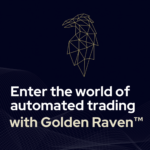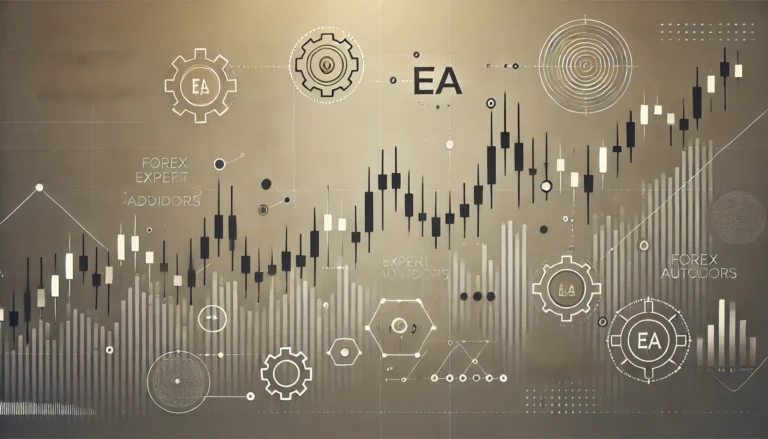When diving into the world of trading, beginners often hear about Expert Advisors (EAs) and how they can automate trading strategies in platforms like MetaTrader (MT4/MT5). However, merely using an EA isn’t enough. To make it truly profitable, you need to know how to optimize it correctly.
Understanding EA optimization
The term “EA optimization” refers to the process of adjusting the parameters/settings of your Expert Advisor to improve its performance under specific market conditions. This includes tweaking things like stop-loss and take-profit levels, which are crucial for maximizing profitability. Let’s walk through the various facets of optimizing an EA to achieve the best results.
Setting clear goals for optimization
Before you start optimizing your EA, it’s essential to have a clear set of goals. Are you looking to increase your profit factor or minimize your risk? Setting these objectives will help guide your optimization process.
Many traders aim for maximum profitability without considering other critical metrics like drawdown and recovery time. It’s vital to balance all these elements for a sustainable trading strategy.
Diving into the parameters/settings
Your Expert Advisor operates based on predefined parameters/settings such as entry points, exit points, stop-loss, and take-profit levels. Adjusting these settings allows you to tailor the EA to suit current market conditions.
Adjusting stop-loss and take-profit levels
One of the first steps in EA optimization is setting appropriate stop-loss and take-profit levels. These are critical as they determine when a trade should close to either secure profits or limit losses.
A common mistake traders make is setting these levels too tight or too wide. You want to find a sweet spot where the EA can operate efficiently without being cut off prematurely or risking too much capital.
- Stop-loss: aim for a level that minimizes loss while keeping you in the game long enough to realize potential gains.
- Take-profit: set this at a level where you’ve maximized your gain within acceptable market conditions without being overly greedy.
Choosing the right timeframes
The timeframe you choose can significantly affect the effectiveness of your EA. For example, shorter timeframes may result in more trades but also introduce higher volatility. Conversely, longer timeframes might be more stable but yield fewer opportunities.
To optimize your EA effectively, backtesting different timeframes against historical data can offer insights into which periods yield the best results. Use platforms like MetaTrader to conduct these tests accurately.
Using backtesting for better insights
Backtesting involves running your EA with past market data to see how it would have performed. This step is crucial for gauging its efficiency and fine-tuning it for better results. Most trading platforms, including MetaTrader, have built-in tools for backtesting.
Interpreting backtesting results
Once you’ve run your backtests, you’ll be faced with a wealth of data. Focus on key metrics like profit factor, drawdown, and the number of trades executed. A high profit factor indicates good performance, while minimal drawdown shows effective risk management.
If the results aren’t satisfactory, revisit your parameters/settings and adjust them accordingly. Often, minor tweaks can lead to significant improvements in your EA’s performance.
| Metric | Description |
|---|---|
| Profit Factor | Ratio of gross profit to gross loss. Higher values are better. |
| Drawdown | Percentage loss from the peak to the trough before recovery. Lower values indicate better risk management. |
| Total Trades | Number of trades executed during the backtest period. Shows the EA’s activity level. |
Risk management and optimization
No optimization discussion would be complete without addressing risk management. Proper risk management ensures that even if you face some losing trades, you don’t wipe out your account.
Implement position sizing strategies and ensure that only a small percentage of your overall capital is at risk per trade. This approach not only protects your funds but also gives your EA a better chance to recover from losses.
Understanding market conditions
Different market conditions call for different EA settings. What works in a trending market might fail in a sideways market. Understanding these nuances helps you adapt your EA accordingly.
Adapting to volatile markets
High volatility presents both challenges and opportunities. In such markets, widening your stop-loss might prevent premature exits, but it could also increase your risk. Monitoring market news and economic indicators can help you prepare better.
During high-volatility periods, consider lowering your position sizes to reduce risk exposure. This balanced approach allows your EA to capitalize on price movements without exposing you to undue risk.
Thriving in stable markets
In contrast, stable markets generally require tighter stop-loss and take-profit levels due to smaller price movements. Here, your EA might benefit from shorter timeframes since smaller price swings are more predictable.
Consistent monitoring and adjustment of your EA based on real-time market analysis ensure that you remain profitable across varying conditions.
Regular updates and monitoring
Optimization isn’t a one-time task; it requires regular updates and constant monitoring. As market conditions change, so should your EA’s parameters/settings.
Continuous Improvement
Collect new data monthly and perform backtests regularly to identify any adjustments needed. This practice helps you keep up with ever-changing market dynamics.
Also, engage with online communities and forums where experienced traders discuss EA optimization techniques. Learning from others’ experiences can provide valuable insights and fresh ideas for improving your trading strategy.
Monitoring performance
Use detailed trade logs to track performance and identify issues. MetaTrader offers features that enable you to monitor each trade’s outcome, providing invaluable data for future optimizations.
By closely tracking and analyzing your EA’s performance, you can make informed decisions to refine and enhance your strategy continually.
Making the most of available tools
Optimizing an EA becomes significantly easier when leveraging the right tools. Platforms like MetaTrader come equipped with extensive resources to aid in your optimization journey.
Utilizing Expert Advisors’ strengths
Understanding the strengths and limitations of your EA is crucial. Not every EA suits all types of strategies. Knowing where your tool excels can help you focus your optimization efforts more effectively.
For instance, some EAs are better suited for scalping, while others excel in trend-following. By aligning your trading strategy with the EA’s strengths, you amplify the chances of achieving maximum profitability.
Advanced techniques and scripts
Beyond the default settings, advanced traders use custom scripts to fine-tune their EAs further. These scripts can execute complex trading logic that goes beyond standard parameter adjustments.
Consider learning some basic scripting skills or collaborate with knowledgeable developers to create tailored solutions that fit your trading needs. Customization opens new avenues for achieving optimal performance.
There’s no absolute formula for success when it comes to EA optimization. It’s a combination of thorough testing, risk management, and continuous adaptation to evolving market conditions. By following the discussed guidelines, you give yourself the best shot at achieving maximum profitability with your Expert Advisor.
Automate Trading for Profitability
Golden Raven™ automates trading with an MT4 expert advisor, ensuring consistent profitability on auto-pilot for financial markets.Verified track record of profitability since August 2022 24/7 support available through our dedicated Discord server Includes user guide and access to extensive set files Immediate access post-purchase with all necessary resources Average monthly return of +3-4% on EUR/USD







